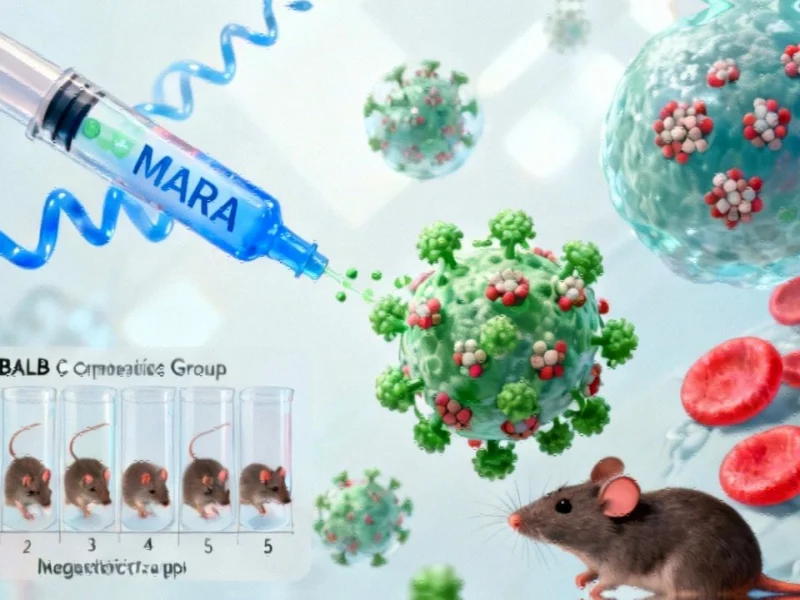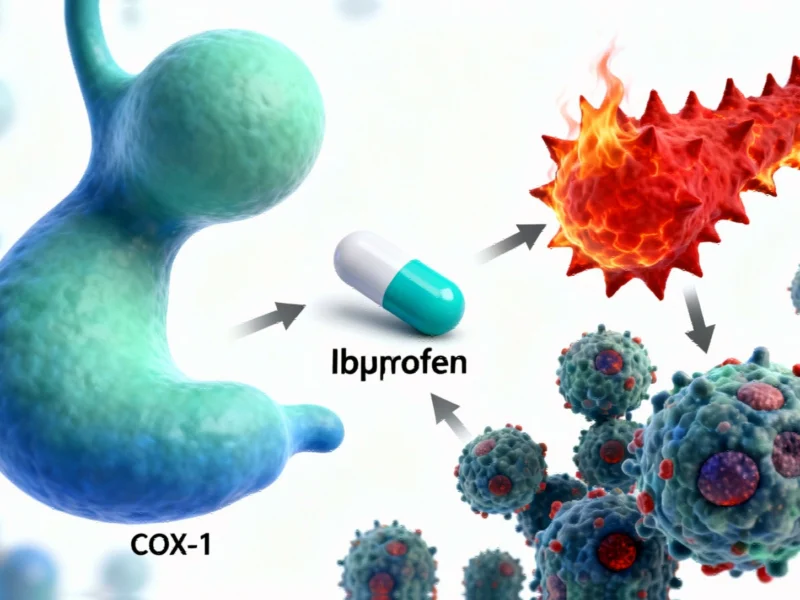Breakthrough Vaccine Platform Combines mRNA and Nanoparticle Technologies
A multi-institutional research team led by University of Washington scientists has engineered a novel vaccine approach that reportedly generates potent immunity against multiple SARS-CoV-2 variants in mice, according to a study published in Science Translational Medicine. The platform integrates messenger RNA delivery with computationally designed protein nanoparticle immunogens, creating what sources indicate could be a next-generation vaccine strategy.
Enhanced Immune Response Through Precision Engineering
The research team genetically fused a stabilized SARS-CoV-2 receptor binding domain variant to a computationally optimized 60-subunit scaffold nanoparticle, creating what analysts suggest is a more effective antigen presentation system. According to reports, this approach amplifies antibody responses by clustering B cell receptors through precise multivalent display of antigen copies.
Study results reportedly showed the mRNA-launched nanoparticle immunogens elicited antibody titers approximately 28 times higher than standard membrane-anchored spike mRNA vaccines and 11 times higher than secreted RBD-trimer mRNA formulations. Even at the lowest tested doses, the nanoparticle approach generated responses comparable to or greater than substantially higher doses of conventional spike-encoding vaccines, the report states.
Broad Protection Against Multiple Variants
The experimental vaccine demonstrated significant cross-protection capabilities, according to the findings. Serum analyses after booster immunization showed persistent neutralization against the original Wuhan-Hu-1 strain while also demonstrating reactivity against the SARS-CoV-2 Omicron variant BA.5, suggesting the platform may provide broader coverage than current technologies.
In challenge experiments, single-dose vaccination completely protected mice from lethal infection with mouse-adapted Wuhan-Hu-1 SARS-CoV-2, preventing weight loss and eliminating detectable virus in lung tissue. Two-dose immunization similarly blocked severe disease following Omicron BA.5 challenge, suppressing viral replication in respiratory tissue and maintaining body weight throughout observation periods.
Superior T Cell Activation
The research revealed another critical advantage of the mRNA nanoparticle approach: robust cellular immunity. Mice receiving the nanoparticle mRNA formulation displayed abundant antigen-specific CD8 T cells in both lungs and spleen, a response that protein-delivered counterparts failed to elicit. This indicates distinct engagement of cellular immunity by the mRNA platform, according to researchers.
The complete study, available through Science Translational Medicine, provides detailed methodology and results from the comprehensive animal trials.
Future Applications and Manufacturing Advantages
Authors present mRNA-launched protein nanoparticle immunogens as a way to combine multivalent antigen display with the speed and scalability of nucleic acid manufacturing. The successful I3-01NS nanoparticle results serve as a proof of concept, showing a genetically deliverable, computationally designed scaffold that could potentially be adapted across various pathogens when paired with appropriately engineered antigens.
This research emerges alongside other industry developments in computational design and recent technology innovations. The approach aligns with broader trends in market trends toward more adaptable vaccine platforms and related innovations in biomanufacturing. As industry analysts monitor these advancements, the integration of computational design with rapid manufacturing platforms represents what some observers describe as a significant step forward in vaccine technology, joining other emerging technologies transforming medical science.
This article aggregates information from publicly available sources. All trademarks and copyrights belong to their respective owners.



